The auto aftermarket is entering one of its strongest growth phases in years. In 2025, US drivers are holding onto their cars longer than ever, with the average vehicle age now over 12 years. That creates a steady, predictable demand for replacement parts—brakes, filters, batteries, lighting—as well as upgrades and accessories. At the same time, buyers have shifted online. Instead of waiting at a counter or calling around, they expect parts to be in stock, clearly listed by year/make/model, and shipped within 2–5 business days.
For dropshippers, this niche is compelling because it combines volume, repeat demand, and margin flexibility. A cabin air filter might be a $20 item, but customers often buy them in pairs or subscribe. A brake kit can run into hundreds of dollars and still be cheaper than dealer pricing. And accessories like floor mats or lighting upgrades allow for healthy markups and easy bundling.
But the opportunity isn’t without challenges. Auto parts require accurate fitment data, careful packaging, and compliance with shipping rules for items like batteries or chemicals. Sellers who treat these as afterthoughts quickly face returns, refunds, and negative reviews. Those who prioritize fitment accuracy, reliable suppliers, and compliant fulfillment can scale confidently.
This guide breaks down the essentials of dropshipping auto parts in 2025—from the hottest SKUs and margin expectations to supplier strategy, packaging, and shipping rules you can’t ignore. Whether you’re just entering the niche or refining your current store, it’s designed to help you build a business that meets demand and grows sustainably.
Market Snapshot: Demand Drivers You Can Bank On
The US auto aftermarket has long been resilient, but 2025 brings a combination of factors that make it especially attractive for dropshippers. Understanding what’s fueling demand helps you choose the right SKUs and set realistic sales expectations.
1. Aging Vehicle Fleet
The average car on American roads is now over 12.8 years old, the oldest in history. With many owners delaying new purchases due to higher vehicle prices and financing costs, routine replacement parts—brakes, filters, suspension, and belts—are in constant demand. Older cars also drive more frequent maintenance, which translates into repeat orders.
2. Shift Toward Online Purchasing
Consumers increasingly trust online platforms for auto parts, not just accessories. What used to mean weekend trips to brick-and-mortar retailers is now handled in a few clicks. Shoppers expect competitive pricing, detailed compatibility data, and fast delivery—making e-commerce an integral channel for maintenance and upgrades.
3. DIY Meets “Do-It-For-Me”
The DIY culture remains strong, with enthusiasts using YouTube tutorials and TikTok shorts to guide installs. At the same time, independent mechanics and small garages often source online for speed and variety. Dropshipping can serve both segments by offering accessible pricing and consistent stock availability.
4. Value Mindset in a Price-Sensitive Market
High inflation and ongoing cost pressures make customers careful about spending. Instead of replacing cars, they invest in maintaining current vehicles. Auto parts are seen as “necessary purchases,” which makes this category less vulnerable to economic slowdowns compared to fashion or luxury goods.
5. Seasonal and Regional Spikes
Demand isn’t flat. Batteries, wipers, and starters surge in colder months, while AC parts, cabin filters, and cooling components peak in summer. Regional weather differences also shape buying patterns—dropshippers who anticipate these cycles and stage inventory accordingly see stronger conversion rates.
6. Expanding Aftermarket Size
The global automotive aftermarket is forecast to grow at a healthy double-digit CAGR through the decade, with North America among the leading regions. This growth is supported by the rise of e-commerce penetration, consumer trust in online purchasing, and the availability of multiple shipping options that make even heavy parts easier to move.
Takeaway: The combination of an aging fleet, consumer shift online, and steady aftermarket growth means dropshipping auto parts isn’t just a short-term play—it’s a long-term, resilient category. Sellers who understand these demand drivers and prepare their catalogs around them will be best positioned to build a sustainable store in 2025.
What Sells: High-Demand Auto Parts & Typical Margins
Auto parts are not a “one-size-fits-all” niche. Success comes from focusing on SKUs that move consistently, carry reasonable margins, and are less prone to compatibility disputes. Below are ten categories that represent the backbone of the dropshipping auto parts business in 2025, with margin ranges based on common online aftermarket scenarios.
1. Brake Pads & Rotors
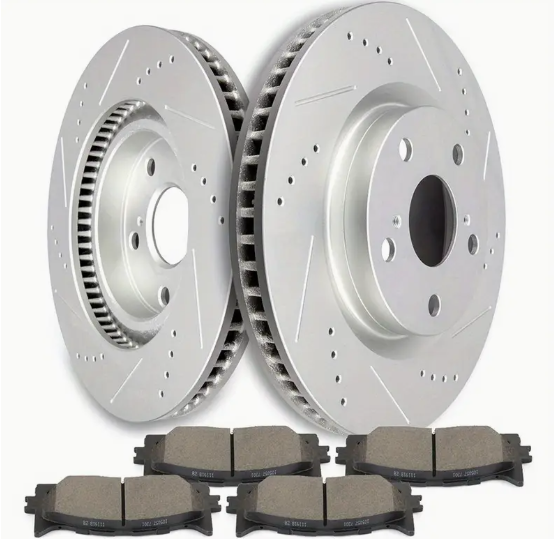
-
Why it sells: These are among the most frequently replaced safety items, especially on vehicles over 6 years old. Buyers often shop by year/make/model, making fitment data essential.
-
Margins: Typically 18–30%. Bundled kits (pads + rotors + hardware) command higher margins and reduce return risk.
-
Pro tip: Offer axle-specific kits and highlight noise/dust reduction features.
2. Filters (Air, Cabin, Oil)

-
Why it sells: Simple installs, repeat purchases every 6–12 months, and high search volume.
-
Margins: 20–35%, especially when sold in multi-packs or bundled with maintenance kits.
-
Pro tip: Position as seasonal or subscription-based items to drive repeat orders.
3. Batteries, Chargers & Jump Starters

-
Why it sells: Cold weather spikes demand for batteries; chargers and jump starters sell well year-round as emergency gear.
-
Margins: 12–25% on batteries (heavier, shipping adds cost); 20–35% on accessories like chargers and portable jump packs.
-
Shipping note: Lithium-ion and lead-acid batteries require ground shipping and compliant packaging.
4. Spark Plugs & Ignition Components

-
Why it sells: Essential for smooth performance; misfire fixes are common on older vehicles.
-
Margins: 20–35%. Multi-cylinder kits increase order value.
-
Pro tip: Include gap specs and installation notes to reduce returns.
5. Belts, Hoses & Tensioners
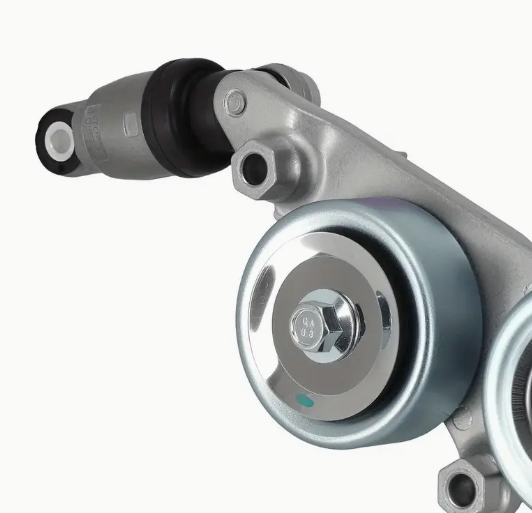
-
Why it sells: Age and heat wear these out, creating steady replacement demand.
-
Margins: 18–30%, with better returns on kits that include clamps or pulleys.
-
Pro tip: Add mileage recommendations to product descriptions for upselling.
6. Suspension Parts (Struts, Control Arms, Bushings)
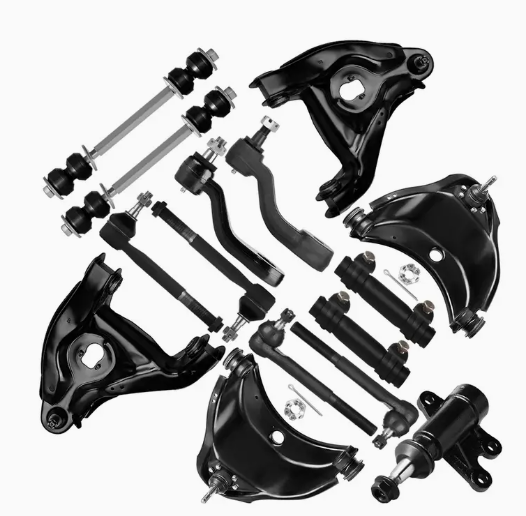
-
Why it sells: Restoring ride quality is a priority for aging SUVs and trucks, now a major share of the US fleet.
-
Margins: 15–28%, but oversize packaging and higher DIM weights can cut into profits.
-
Pro tip: Highlight noise/vibration fixes—these drive purchase urgency.
7. Lighting (Headlights, LEDs, Fog Lamps)

-
Why it sells: A mix of safety and style; upgrades to LED kits are popular in DIY circles.
-
Margins: 20–40%, with high markups on full housing kits or premium bulbs.
-
Compliance tip: Mention DOT/SAE certification where required.
8. Wipers, Washer Pumps & Small Electrics
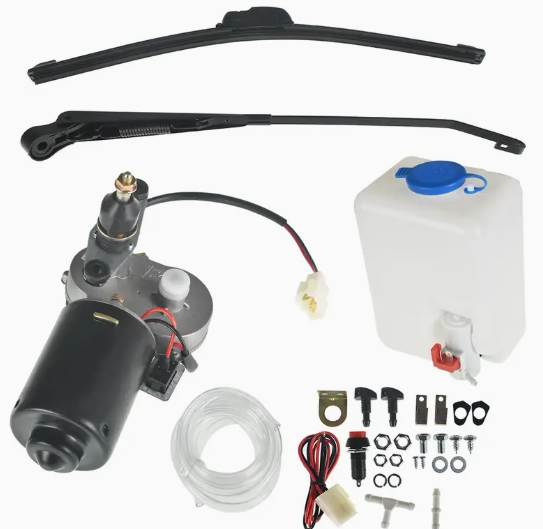
-
Why it sells: Quick impulse buys; strong seasonal sales in rainy/snowy months.
-
Margins: 25–45%, highest in the category due to low cost and frequent need.
-
Pro tip: Use auto-fit wiper recommendation tools at checkout to boost conversions.
9. Floor Mats & Cargo Liners
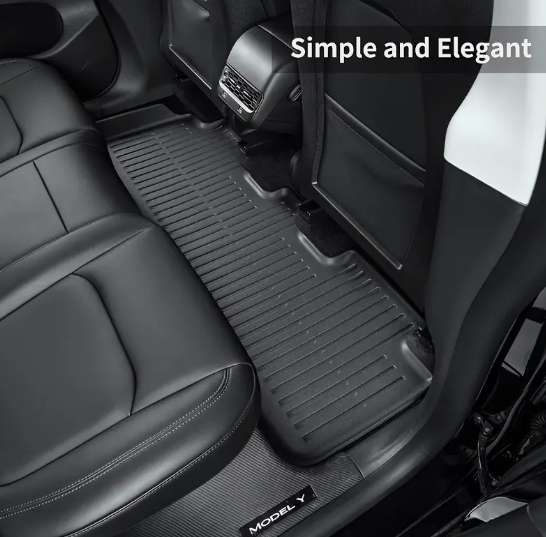
-
Why it sells: Buyers want protection and personalization, especially in trucks and SUVs.
-
Margins: 20–40%, with weatherproof or branded mats commanding premium pricing.
-
Pro tip: Seasonal campaigns (“winter-ready interiors”) work well here.
10. Tow Accessories & Exterior Utility (Hitches, Racks, Covers)
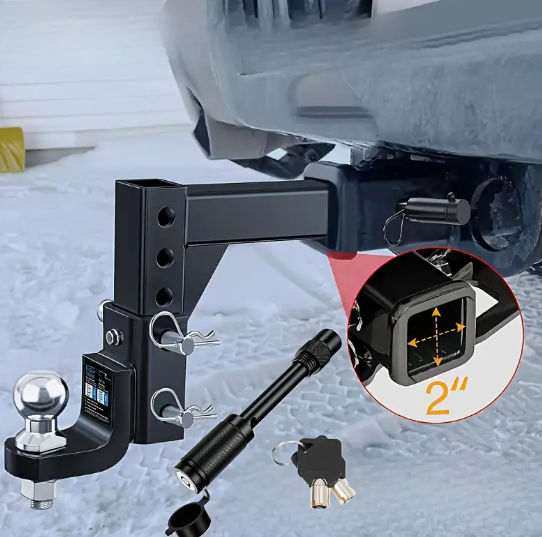
-
Why it sells: Pickup and SUV owners often invest heavily in utility gear.
-
Margins: 15–30%, though size/weight adds shipping complexity.
-
Pro tip: Include installation PDFs and torque specs to reduce claims.
Key Takeaway
High-demand auto parts balance frequency of replacement with margin potential. Consumables like filters and wipers generate repeat business, while larger-ticket items like brakes and suspension anchor your average order value. The best approach is a mix of high-turnover essentials and higher-margin upgrades—bundled smartly to reduce returns and increase order size.
Fitment & Data: How to Cut Returns (and Headaches)
Auto parts are notorious for high return rates online—not because customers don’t want the product, but because it doesn’t fit their specific vehicle. In most cases, the problem isn’t logistics, it’s data accuracy. Sellers who invest in clean fitment data and clear product information see drastically fewer returns and higher customer satisfaction.
Why Fitment Accuracy Is Everything
Unlike fashion or home goods, auto parts depend on complex variables: year, make, model, trim, drivetrain, engine size, transmission type, and even factory option packages. A brake pad for a 2017 Honda Accord 2.4L may not fit the same car with a 3.5L V6. Without this clarity, shoppers gamble—and you pay for the return.
Practical Steps to Reduce Returns
1. Adopt a Fitment Standard
Use structured YMM (Year/Make/Model) or ACES/PIES data standards when listing. Always specify exclusions (e.g., “not for 4WD models” or “fits with towing package only”).
2. Enrich Product Attributes
Include OEM and aftermarket cross-reference numbers. Add dimensions, torque specs, thread pitch, fluid quantity/type, and packaging details. This level of detail reassures buyers and helps mechanics order quickly.
3. Use Visuals That Clarify
Exploded diagrams or side-by-side comparisons show exactly what’s included in the kit. Short install notes or torque charts can cut support tickets by half.
4. Confirm Fitment Before Checkout
Add a simple “Confirm Your Vehicle” pop-up or a checkbox that requires buyers to select YMM before adding to the cart. Bonus: Send an automated post-purchase email confirming the selected vehicle to reduce buyer’s remorse.
5. Audit Your Data Regularly
Review top-return SKUs monthly. If a part has a high RMA rate, the issue is often incorrect or incomplete compatibility data, not customer error.
The Bigger Payoff
Every return avoided saves not just shipping and restocking costs—it protects your review profile. Auto-parts customers are highly vocal when the wrong part shows up. On the flip side, when a part arrives, fits perfectly, and installs smoothly, those same buyers often leave glowing reviews and recommend your store to peers and forums.
Key Takeaway: Treat fitment data as your moat. Detailed attributes, compatibility checks, and proactive buyer confirmations will reduce returns, lower support costs, and build trust. In auto parts dropshipping, accuracy is a profit lever as powerful as shipping speed.
Shipping & Compliance: Batteries, Fluids, Oversize, and Q4 Readiness
In auto parts dropshipping, shipping isn’t just about speed—it’s about safety, compliance, and planning ahead for seasonal surges. Many categories involve restricted goods, heavy dimensions, or climate-sensitive packaging, which directly affects margins and customer experience. Here’s what to know before scaling.
Batteries: Lithium & Lead-Acid
Batteries are high-demand items but also the most regulated.
-
Ground shipping only: Lithium-ion and lead-acid batteries must usually travel via ground, not air. That means no expedited 2-day air unless using compliant packaging and carriers that explicitly allow it.
-
Packaging & labeling: Expect UN-compliant packaging, hazmat labeling, and restrictions on damaged/defective battery returns. These rules vary slightly between carriers but are strictly enforced.
-
Customer communication: Always publish realistic ETAs for battery orders and clearly state restrictions like “ships ground only within the continental US”
Fluids & Chemicals
Coolant, motor oil, transmission fluid, and cleaning chemicals fall under hazmat in many cases.
-
Shipping restrictions: Some cannot ship by air or internationally.
-
Storage & leakage risk: Fluids need leak-proof containment, double-bagging, and sturdy cartons. Returns are especially costly—better to focus on trusted suppliers who have proven safe-packaging SOPs.
-
Listing accuracy: Always include fluid type (synthetic, DOT rating, viscosity) and capacity in oz/L. Missing data drives both returns and liability.
Oversize & Heavy Items
Brake rotors, struts, tow hitches, racks, and bumpers bring healthy order values but raise fulfillment challenges.
-
DIM weight charges: Carriers now price by dimensional weight, not just actual weight. A $40 hitch might carry $25 in shipping cost if not priced properly.
-
Packaging requirements: Heavy steel parts need reinforced cartons, internal bracing, and often molded foam to survive transit without damage.
-
Pricing strategy: Use free shipping thresholds carefully—consider offering “free shipping over $99” but exclude oversize items or add a handling fee.
Seasonal & Q4 Readiness
Cold weather spikes sales of batteries, wipers, washer pumps, and starters, while Q4 holiday shipping congestion stretches delivery timelines.
-
Stage inventory early: Move your fastest-moving SKUs (filters, brake kits, batteries, lighting) into US warehouses before November.
-
Publish clear cut-off times: Be upfront about holiday cut-offs for guaranteed delivery, especially for safety-critical SKUs like brakes and lighting.
-
Carrier diversification: Relying on one shipper is risky in peak season. Suppliers with multiple carrier relationships can reroute when networks congest.
-
Returns management: Q4 volume also means Q1 returns. Make sure your supplier has the staffing and workflow to process RMAs quickly so you don’t get stuck with long refund cycles.
Supplier Playbook
Choosing the right supplier mix is one of the most important steps when dropshipping auto parts. Unlike fashion or home goods, this category demands strict compliance, reliable fitment data, and the ability to move heavy or regulated items quickly. Here’s a practical playbook for structuring your supplier relationships in 2025.
1. Start With a Generalist Partner
You’ll want one supplier that covers a broad catalog, offers US warehouse fulfillment for 2–5 day delivery, and integrates with your store platform. This partner should give you:
-
Real-time stock sync so you don’t oversell.
-
Automatic fulfillment to keep order handling efficient.
-
Flexibility across product types, from consumables like filters to larger kits like brakes or lighting.
A good example: Some dropshippers rely on platforms that combine sourcing and fulfillment, allowing you to test products first and then move proven winners into US stock for faster delivery.
2. Layer in Category Specialists
Certain auto parts categories require more specialized suppliers:
-
Batteries and chargers: Partners with hazmat certification and compliant packaging.
-
Truck/SUV accessories: Regional 3PLs that can handle oversize racks, hitches, or bed covers.
-
Premium lighting: Suppliers that certify DOT/SAE compliance for peace of mind.
Adding one or two specialists gives you depth without complicating operations.
3. Run a Pilot Program
Never commit based on a catalog alone. Send a 10-point RFP asking for warehouse ZIPs, average handling time, on-time delivery metrics, returns flow, and a full fee breakdown. Then:
-
Run 200–500 test orders with your shortlist.
-
Track DIFOT (Delivered In-Full, On-Time), scan rates, ticket volume per 100 orders, and RMA turnaround.
-
Keep only suppliers that hit ≥95% on-time delivery with clean customer experience metrics.
4. Maintain Redundancy
For safety-critical SKUs like brakes, suspension, or lighting, having at least two approved suppliers is smart. If one runs out of stock, you can still meet your delivery promise without losing sales.
5. Where CJdropshipping Fits Naturally
If you want a single platform that covers both general and brand-building needs, CJdropshipping is a strong candidate. It combines:
-
Sourcing support (find specific SKUs or negotiate better pricing).
-
US warehouse fulfillment with 2–5 business-day delivery on stocked items.
-
Automatic order syncing with Shopify, WooCommerce, TikTok Shop, eBay, and more.
-
Customization options like print-on-demand and branded packaging, which are rare in the auto parts space but valuable for accessories.
-
Multiple payment methods to reduce risk if one provider applies high reserves.
This makes CJ well-suited as the “engine” of your operation, while you still add specialists for batteries, fluids, or oversize gear.
🔗 For a deeper dive into auto parts, see our guide: Auto Parts Dropshipping Supplier Guide.
Key Takeaway: Keep your stack simple. One reliable generalist supplier, plus one or two specialists, gives you speed, breadth, and compliance. Validate through a structured pilot and measure performance quarterly. Done right, this approach protects your margins and ensures customers get the right part, at the right time, every time.
Marketing That Converts: Where Auto Parts Buyers Actually Click
Auto parts buyers are not impulse shoppers like those browsing fashion or home goods. They are problem-solvers: when something breaks, they need a fix fast. That means your marketing should meet them at the moment of intent, reassure them with compatibility data, and then convert them with trust signals. Here’s where to focus your energy.
Search Campaigns: Meeting High-Intent Buyers
-
Google Shopping & Paid Search are essential. Shoppers often type in year/make/model + part (e.g., “2015 Ford F-150 brake rotors”) or even symptom-driven searches (“car vibrates when braking”).
-
Target OEM part numbers and cross-references in ad groups; these terms may have lower competition and higher conversion.
-
Ensure your landing pages show fitment tables and shipping ETAs prominently—buyers won’t dig for them.
Video & Social: Demonstrating Utility
-
YouTube and TikTok Shorts are huge for DIY-minded customers. Quick install clips (e.g., “How to change a cabin air filter in under 5 minutes”) build authority while linking directly to the kit.
-
Use before/after content (brighter headlights, quieter brakes) to emphasize benefits.
-
Authentic, tool-in-hand videos outperform polished ads in this niche.
Communities & Forums: Where Trust Is Built
-
Enthusiast groups (Facebook, Reddit, brand-specific forums) are hotspots for part recommendations.
-
Participation should be helpful first—answer fitment questions, share install tips—then naturally link your listings.
-
Reviews and UGC in these spaces carry more weight than polished ad copy.
Retention Channels: Email & SMS
-
Maintenance cycles make email a powerful repeat-sales driver. Send reminders like “Time to replace your cabin filter?” or “Check your wipers before winter hits.”
-
Segment by vehicle type to tailor campaigns—truck owners respond to towing/upgrading offers, while compact car drivers may respond to fuel-efficiency parts.
-
SMS works well for urgent offers—“Order by Thursday for guaranteed delivery before the snowstorm.”
Reviews & User-Generated Content
-
Encourage buyers to share photos or short clips of installs. For many, posting that they fixed something themselves is a badge of pride.
-
Highlight reviews mentioning fitment accuracy and fast shipping—these are the two biggest trust drivers in auto parts.
-
Consider incentivizing reviews with discount codes for repeat orders.
Auto parts marketing is less about flashy creative and more about being present where buyers search for solutions, demonstrating fitment confidence, and reinforcing trust with social proof. Nail search intent, show compatibility up front, and back it with real-world installs and reviews—those are the clicks that convert in 2025.
Turning Auto Parts Into a Sustainable Dropshipping Business in 2025
The auto parts niche isn’t a quick-win category—it’s a steady, resilient market shaped by the realities of an aging US vehicle fleet and the growing preference for online purchasing. What sets successful sellers apart is their ability to combine accurate fitment data, reliable suppliers, and realistic shipping expectations into a smooth buying experience.
Margins are healthy enough to sustain growth, especially when sellers mix high-frequency consumables like filters and wipers with higher-value essentials such as brakes, suspension, and lighting. The challenge—and opportunity—lies in execution: ensuring the part fits the first time, arrives within a promised 2–5 business days, and comes packaged in a way that reflects professionalism.
If you’re considering this niche, start with a simple supplier stack: one generalist partner who can cover broad catalog needs and US fulfillment, and one or two specialists for categories like batteries, fluids, or oversized accessories. Invest in detailed product listings with structured YMM data, run seasonal campaigns that anticipate customer needs, and back everything with proactive support and clear returns handling.
Done right, dropshipping auto parts in 2025 can be more than a side hustle—it can become a long-term business anchored in repeat demand, strong customer loyalty, and scalable operations. Treat fitment and shipping as brand assets, not just back-end details, and you’ll build a store that earns both trust and profit in a category that never goes out of style.
